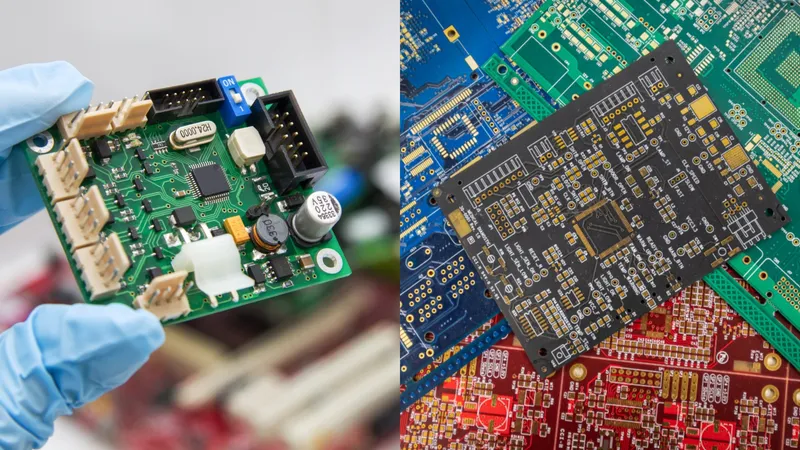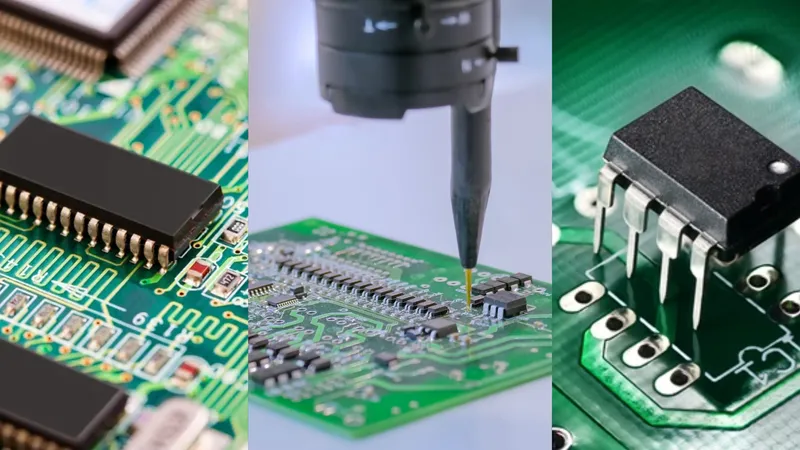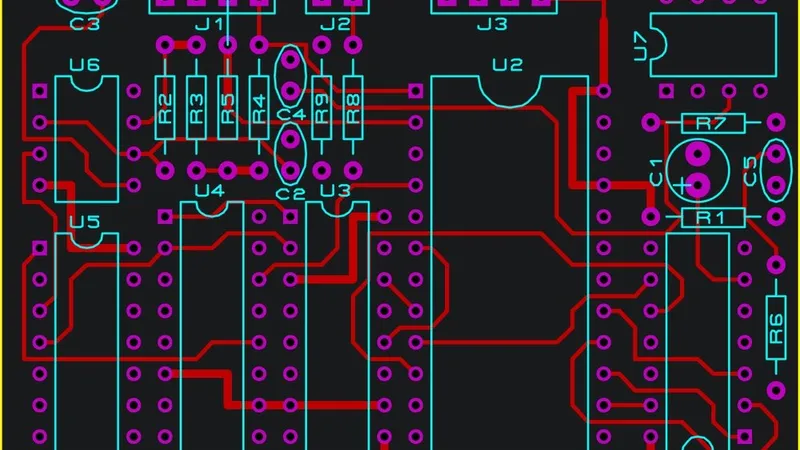In today’s world, where environmental concerns are at the forefront of technology development, the design of printed circuit boards (PCBs) plays a crucial role in promoting sustainability. Reducing PCB size for sustainability and optimizing PCB layer count are two key strategies that can significantly minimize material usage in PCB production. By focusing on efficient PCB layout design and adhering to eco-friendly PCB design principles, engineers can lower waste, reduce energy consumption, and create greener electronics. In this blog, we’ll explore how PCB size and layer count impact the environment and provide actionable tips for designing with sustainability in mind.
Why PCB Design Matters for Environmental Sustainability
The electronics industry is a major contributor to global waste, with millions of tons of electronic waste (e-waste) generated each year. PCBs, as the backbone of nearly all electronic devices, are central to this issue. Manufacturing PCBs involves resource-intensive processes, including the use of metals like copper, fiberglass, and epoxy resins, as well as energy-heavy production methods. When PCBs are discarded, they often end up in landfills, where toxic materials can harm the environment.
By focusing on reducing PCB size for sustainability and minimizing material usage in PCB design, manufacturers can lower their environmental footprint. Smaller PCBs use fewer raw materials, while optimizing PCB layer count reduces the complexity of production and waste. Efficient PCB layout design further enhances these efforts by ensuring that every square inch of the board is used effectively. Let’s dive deeper into how these factors influence sustainability.

The Environmental Impact of PCB Size
The size of a PCB directly affects the amount of material required for its production. Larger boards demand more substrate materials, copper for traces and vias, and solder mask layers. This increased material usage not only raises costs but also amplifies the environmental impact. For instance, producing a single square inch of PCB substrate can require significant amounts of energy and water, contributing to carbon emissions and resource depletion.
Reducing PCB size for sustainability is a practical solution. A smaller PCB footprint means less material is needed, which translates to lower resource consumption. For example, if a design is reduced from 10 square inches to 5 square inches, material usage could be halved, directly cutting down on waste. Additionally, smaller boards often require less packaging during shipping, further reducing the environmental impact.
To achieve a smaller PCB size, engineers can prioritize compact component placement and use surface-mount technology (SMT) instead of through-hole components. SMT components are smaller and can be placed closer together, allowing for a more efficient PCB layout design. This approach not only minimizes material usage in PCB production but also supports lighter, more energy-efficient devices.

Optimizing PCB Layer Count for Sustainability
The number of layers in a PCB design also plays a critical role in environmental sustainability. Multi-layer PCBs, while necessary for complex circuits, require more materials and energy to produce compared to single or double-layer boards. Each additional layer adds to the amount of copper, dielectric material, and manufacturing steps needed, increasing both the cost and environmental footprint.
Optimizing PCB layer count involves striking a balance between functionality and sustainability. For example, a 4-layer PCB might be necessary for a high-speed design with strict impedance control (e.g., maintaining 50 ohms for signal integrity), but for simpler applications, a 2-layer board could suffice. By carefully analyzing the circuit’s requirements, engineers can avoid over-designing and reduce unnecessary layers. This not only minimizes material usage in PCB production but also lowers energy consumption during manufacturing, as fewer layers mean fewer lamination and etching processes.
One practical tip for optimizing PCB layer count is to use advanced routing techniques. By improving trace layouts and utilizing both sides of a double-layer board effectively, designers can often avoid the need for additional layers. This approach aligns with eco-friendly PCB design principles by ensuring that resources are used efficiently.

Strategies for Efficient PCB Layout Design
An efficient PCB layout design is essential for reducing waste and promoting sustainability. A poorly planned layout can lead to larger board sizes, unnecessary layers, and wasted space, all of which increase material usage and environmental impact. By contrast, a well-thought-out design maximizes the use of available space and minimizes resource consumption.
Here are some key strategies for achieving an efficient PCB layout design:
- Component Placement: Place components logically to minimize trace lengths and avoid overcrowding. This reduces the board size and the amount of copper needed for connections.
- Trace Optimization: Use shorter, direct traces to connect components, reducing the amount of copper and improving signal integrity. For high-speed designs, maintain consistent trace widths (e.g., 6 mils for controlled impedance) to avoid signal loss.
- Ground Planes: Utilize solid ground planes to reduce noise and eliminate the need for additional layers dedicated to grounding.
- Panelization: Design PCBs to fit efficiently into manufacturing panels, minimizing wasted material during production.
By implementing these strategies, engineers can create designs that align with eco-friendly PCB design principles while maintaining performance. Efficient layouts not only reduce material usage in PCB production but also lower manufacturing costs and improve product reliability.

Eco-Friendly PCB Design Principles
Beyond size and layer count, adopting eco-friendly PCB design principles is vital for long-term sustainability. These principles focus on reducing environmental impact at every stage of a PCB’s lifecycle, from design and manufacturing to disposal.
1. Material Selection: Choose sustainable materials whenever possible. For instance, some manufacturers are exploring biodegradable substrates that decompose naturally, reducing e-waste. While these materials are not yet widely adopted, specifying lead-free solders and halogen-free laminates can minimize toxic pollution.
2. Energy Efficiency: Design circuits that consume less power, as this reduces the energy footprint of the final product. For example, incorporating low-power components can decrease overall energy usage by up to 30% in some applications.
3. Recyclability: Design PCBs with end-of-life recycling in mind. Avoid using adhesives or coatings that make disassembly difficult, and label materials clearly to aid recycling processes.
4. Longevity: Create durable designs that extend the lifespan of electronic products. A longer-lasting device means less frequent replacement and reduced waste. For instance, using high-quality components and robust trace designs can prevent failures due to thermal stress or signal degradation.
By integrating these eco-friendly PCB design principles, engineers can contribute to a greener electronics industry. These practices complement efforts to reduce PCB size for sustainability and optimize PCB layer count, creating a holistic approach to environmental responsibility.
The Broader Benefits of Sustainable PCB Design
Designing PCBs with sustainability in mind offers benefits beyond environmental impact. For manufacturers, reducing PCB size for sustainability and minimizing material usage in PCB production can lead to significant cost savings. Smaller boards and fewer layers mean lower material and production costs, while efficient PCB layout design reduces manufacturing errors and rework.
For end-users, sustainable PCBs contribute to lighter, more energy-efficient devices. For example, a compact PCB in a smartphone not only reduces the device’s weight but also improves battery life due to lower power demands. This creates a win-win situation where environmental goals align with improved user experience.
Moreover, companies that prioritize eco-friendly PCB design principles often gain a competitive edge. As consumers and regulators push for greener technologies, businesses that adopt sustainable practices are better positioned to meet market demands and comply with environmental regulations.
Challenges in Implementing Sustainable PCB Design
While the benefits of sustainable PCB design are clear, there are challenges to overcome. One major hurdle is balancing performance with sustainability. High-performance electronics often require complex, multi-layer designs that conflict with efforts to optimize PCB layer count. For instance, achieving signal speeds of 5 Gbps in a data communication device may necessitate a 6-layer board, even if a 2-layer design would be more sustainable.
Another challenge is the limited availability of eco-friendly materials. While research into biodegradable substrates and non-toxic chemicals is progressing, these options are not yet cost-effective or widely accessible for mass production. Engineers must often work within the constraints of current materials while advocating for greener alternatives.
Despite these challenges, incremental improvements in design practices can still make a significant difference. By focusing on reducing PCB size for sustainability and adopting efficient PCB layout design, engineers can achieve meaningful progress even within existing limitations.
Conclusion: A Call to Action for Sustainable PCB Design
The impact of PCB size and layer count on environmental sustainability cannot be overstated. By reducing PCB size for sustainability, optimizing PCB layer count, and embracing efficient PCB layout design, engineers can minimize material usage in PCB production and lower the environmental footprint of electronics. Adopting eco-friendly PCB design principles further enhances these efforts, ensuring that sustainability is prioritized at every stage of the design process.
As the electronics industry continues to grow, the responsibility to design with the environment in mind falls on all of us. Whether you’re an engineer, a manufacturer, or a decision-maker, taking steps to create greener PCBs can lead to a more sustainable future. Start small by evaluating your next design for opportunities to reduce size, optimize layers, and improve efficiency. Together, we can make a lasting impact on the planet while advancing technology.
 ALLPCB
ALLPCB







